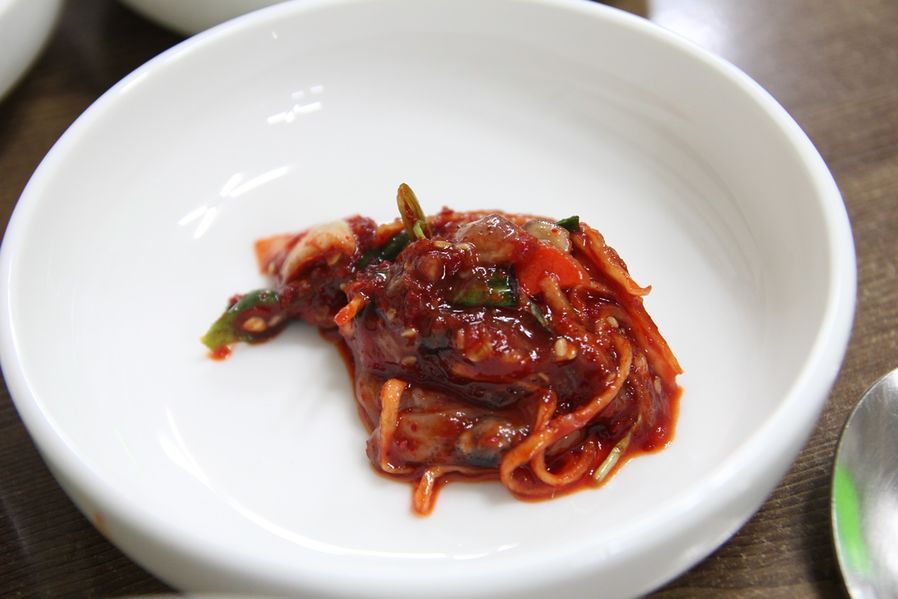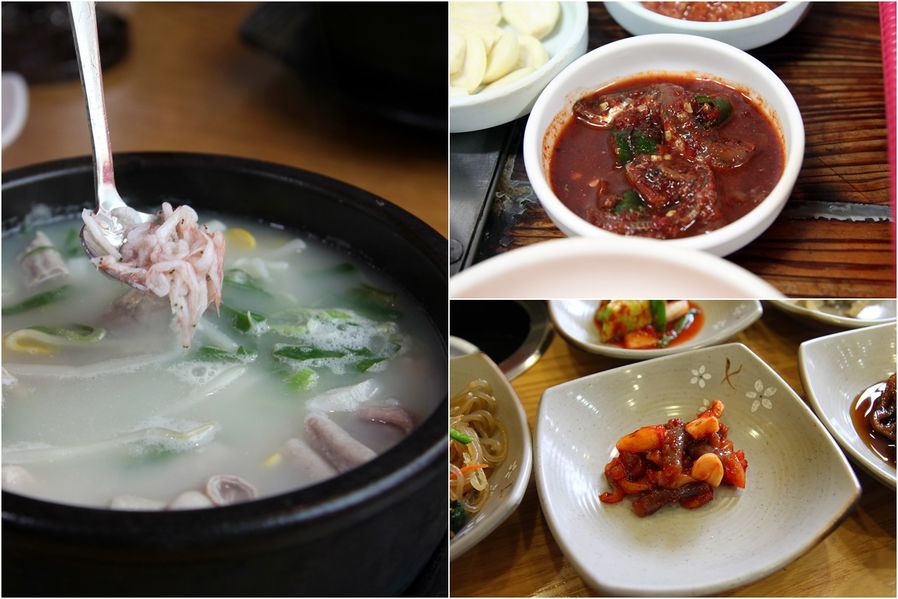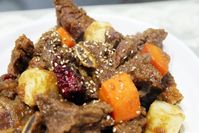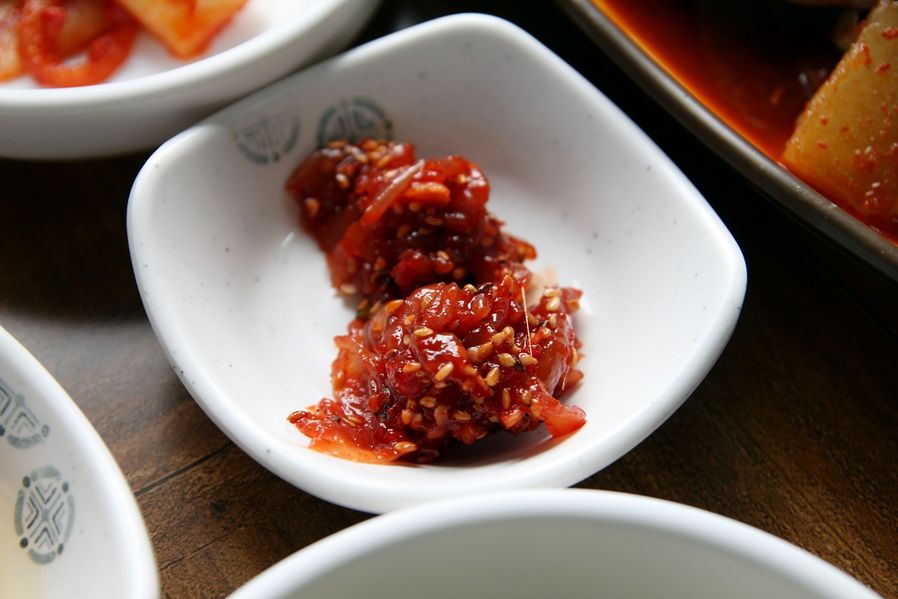1. Ingredients for Jeotgal
-Primary ingredients: Flesh, roe and entails of fish or shellfish
-Secondary ingredients: Fermented with salt
2. Taste evaluation
-Spicy:☆☆☆☆☆
-Salty:★★★★★
-Sweet:☆☆☆☆☆
-Sour:☆☆☆☆☆
-Toasted flavor: ☆☆☆☆☆
3.
Introduction to Jeotgal(salted seafood)
Kimchi
representing Korean traditional foods has a special taste that normal
vegetables cannot make. It’s because of its integral ingredient
called Jeotgal.
Jeotgal
is practically salted and fermented flesh, roe, and entails of
seafood. The recipe and the taste might be a little different from
another but China and Southeast Asians enjoy Jeotgal and it is
similar to Dutch herring, the famous Dutch cuisine, in Netherlands
and similar to anchovy in Italy.
The
origin of Jeotgal is not confirmed but it’s been used in warm
countries like India, Thailand and Vietnam to keep the food safe for
a long period time.
It’s
also known that the King Sinmun of Silla prepared Jeotgal (used to be
called Hae) while he was waiting for his Queen.
There’s
even a document that says that ‘Jeotgol is for everyone regardless
of one’s position’ from Goryeo Dynasty era.
Jeotgal
was generalized through Silla to Goryeo Dynasty era.
The
recipe has been constantly developed that there were 150 kinds of it
in Joseon Dynasty era.

Canon EOS 550D | f/4.0 | iso 1000 | 2014:05:07 14:42:23 | Flash did not fire, compulsory flash mode | 43mm
Jeotgal
is made with flesh, roe and entails of fish or shellfish that has a
strong salty taste and fishy smell.
It
stinks like moldy cheese because the fish is fermented for a long
time until it becomes Jeotgal.
The
strong taste and scent could scare foreigners off.
Although
it tastes very salty at first, it gets tastier the more it is
fermented.
If
you ever tried Korean traditional food, I bet you’ve tasted Jeotgal
whether you knew it or not.
Especially
the thing that makes Kimchi tasty and salty is coming from Jeotgal.
And
Saeu-jeot is served with Suyuk(or Bossam) and Jokbal and used as a
seasoning for many dishes.
Jeotgal
is usually served when you order Hanjeongsik or Baekban.
People
find Korean food very spicy or garlicky but you’ll see that Jeotgal
is very Korean as well so I want you to taste it just a little bit.
Search on Wikipedia
4.
Kinds of Jeotgal
There
are almost 150 kinds of Jeotgal since Joseon Dynasty era. I’ll
introduce you five most popular Jeotgal in Korea.
-
Saeu-jeot: Salted small shrimps. Usually used in sauce to make Kimchi
or pork dishes.
-
Ojingeo-jeot: Salted squid slices fermented and seasoned with chili
powder.
-
Jogae-jeot: Salted and fermented shellfish flesh.
-
Myeongran-jeot: Salted pollack roe. Usually used to make oil pasta
for its non-fishy scent.
-
Changran-jeot: Salted and fermented Alaska pollack entails.

5.
How to enjoy Jeotgal even more
In
old times when there was no refrigerator, Korean people invented a
recipe called Jeotgal in order to keep the ingredients that are
easily rotten.
They
put so much salt in it to keep it fresh.
So
you’d have to eat a really small amount of Jeotgal with rice.
Put
Jeotgal as small as your little fingernail on a spoonful of rice.
It
will be salty at first but you’ll feel the special taste of seafood
the more you chew.
I
say foreigners should try Saeu-jeot, Ojingeo-jeot and Myeongran-jeot.
First
of all, Saeu-jeot goes well with pork. It’s usually enjoyed with
boiled pork (Bossam or Suyuk) or Jokbal(pigs’ feet).
Fresh
taste of shrimp will be helpful to remove greasy taste and texture of
pork.
Secondly,
Ojingeo-jeotgal is fermented squid flesh so the taste and scent is
weaker than Jeotgal mixed with squid entails.
Thirdly,
Myeongran-jeot is made with pollack roe. The scent and taste of
salted pollack roe is less fishy than other fish. And it tastes spicy
from chili powder. And a few drops of sesame oil make it tasty, and
spices like garlic and spring onion remove the fishy smell and taste.
Ojingeo-jeotgal
and Myeongran-jeot is tasty if you eat it with warm white rice.











